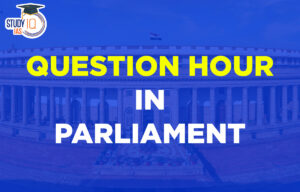Table of Contents
National Education Policy 2020
The National Education Policy 2020 is a landmark policy document that aims to transform the Indian education system by providing a more flexible, holistic, and multidisciplinary education. National Education Policy 2020 proposes a new 5+3+3+4 structure of school education and emphasizes the importance of mother tongue, vocational education, and digital education among other things. National Education Policy 2020 has the potential to prepare students for the challenges and opportunities of the 21st century.

Read about: Education Ministers of India List
New Education Policy 2020 Key Highlights
The 10+2 system will be divided into 5+3+3+4 format. NEP expands the age group from 6-14 years of mandatory schooling to 3-18 years of schooling.
1. Foundation Stage: 5 years total
- 3 years of pre-primary school
- 2 years of classes 1 and 2.
2. Preparatory Stage: 3 Years – Classes 3 to 5
3. Middle Stage: 3 years of classes 6 to 8
4. Secondary Stage: 4 years of classes 9 to 12
- The NEP puts focus on students’ mother tongue as the medium of instruction.‘’Wherever possible, the medium of instruction until at least Grade 5, but preferably till Grade 8 and beyond, will be the home language, mother tongue, local language or regional language. Thereafter, the home or local language shall continue to be taught as a language wherever possible. This will be followed by both public and private schools.’’
- Research shows that children pick up languages extremely quickly between the ages of 2 and 8 and that multilingualism has great cognitive benefits for young students, children will be exposed to different languages early on.
- The ‘Three language formula’ will continue but no language will be imposed on anyone. At least two of the three languages should be Indian.
- The NEP only recommends the mother tongue as a medium of instruction, and does not make it compulsory. (Upto states to implement)
- When the original NEP draft was released by the Centre in May 2019, it contained a clause stipulating the teaching of Hindi as part of the three-language formula in schools. Following a backlash from Tamil Nadu, West Bengal and other States, the Centre quickly issued a revised phrasing of that clause.
New Education Policy 2020 Principles
The New Education Policy (NEP) 2020 shares ideas to revamp education, teaching and assessment systems in schools, and colleges. The fundamental principles of National Education Policy 2020 are explained below.
| Principle | Description |
| Early Childhood Care and Education (ECCE) |
|
| School Education |
|
| Multilingualism |
|
| Vocational Education |
|
| Higher Education |
|
| Teacher Education |
|
| Assessment and Evaluation |
|
| Technology |
|
| Equity and Inclusion |
|
| Research and Innovation |
|
| Flexibility in Choice of Subjects |
|
| Credit Bank |
|
| Gender Inclusion Fund |
|
| Special Education Zones |
|
| Internationalization of Education |
|
| Reducing the Load of Curriculum |
|
Read More: Education System in British India
National Education Policy 2020 Criticisms
The National Education Policy (NEP) 2020 has been widely debated and criticized by various stakeholders. Here are some of the criticisms of the policy:
- Lack of Clarity: The policy has been criticized for its lack of clarity and specificity in several areas, such as the implementation timeline, funding, and accountability.
- Overemphasis on Digital Learning: The policy has been criticized for its overemphasis on digital learning, which may not be accessible to all students, especially those from disadvantaged backgrounds.
- Commercialization of Education: The policy has been criticized for promoting the commercialization of education by allowing foreign universities to set up campuses in India and by encouraging the private sector to play a larger role in education.
- Language Policy: The policy has been criticized for its language policy, which proposes the use of the mother tongue or regional language as the medium of instruction up to Grade 5. This has been criticized for potentially excluding students who do not speak the regional language.
- Centralization of Power: The policy has been criticized for its centralization of power, with the establishment of a centralized regulatory body for higher education and the reduction of autonomy for universities.
- Lack of Focus on Teacher Training: The policy has been criticized for its lack of focus on teacher training, which is essential for improving the quality of education.
Read More: Sargeant Plan of Education
National Education Policy 1986
The National Education Policy (NEP) of 1986 was a landmark policy document that set the direction for education in India for several decades. However, over the years, there were several changes in the economic, social, and political context of the country, which necessitated the need for a new education policy.
National Education Policy 1986 Features
The salient features of the National Education Policy 1986 can be summarized below.
| Feature | Description |
| Universalization of Elementary Education | The policy aimed to achieve universalization of elementary education by providing access to education to all children in the age group of 6 to 14 years. |
| Vocationalization of Education | The policy emphasized the need for vocationalization of education and proposed the integration of vocational education into the curriculum at all levels of education. |
| Decentralization of Education | The policy proposed the decentralization of education by giving greater autonomy and decision-making power to local bodies and institutions. |
| Use of Technology in Education | The policy recognized the potential of technology in education and proposed the use of technology in education for the improvement of teaching and learning. |
| Teacher Education | The policy emphasized the importance of teacher education and proposed the establishment of teacher education institutions for the training of teachers. |
| Improvement of Quality of Education | The policy aimed to improve the quality of education by ensuring that the curriculum is relevant and up-to-date, and by promoting innovation in teaching and learning. |
| Inclusion of Marginalized Groups | The policy emphasized the need to include marginalized groups such as women, scheduled castes, scheduled tribes, and minority communities in the education system. |
| Promotion of Indian Languages | The policy recognized the importance of promoting Indian languages and proposed the inclusion of Indian languages in the curriculum at all levels of education. |
| Promotion of Culture and Values | The policy emphasized the importance of promoting culture and values and proposed the inclusion of value education in the curriculum at all levels of education. |
| Education for National Development | The policy recognized the importance of education for national development and proposed the integration of education with national development goals. |
Read More: Socio-Religious Reform Movement
National Education Policy 2020 UPSC
The National Education Policy 2020 is an important policy document for the UPSC exam as it is a comprehensive policy framework that aims to transform the Indian education system. The policy proposes several reforms that are relevant to the UPSC exam, such as the new 5+3+3+4 structure of school education, the emphasis on vocational education and multilingualism, the promotion of experiential and multidisciplinary learning, and the use of technology in education. Additionally, the policy has significant implications for the social, economic, and cultural development of the country, making it an important topic for the UPSC exam.


 Question Hour in Parliament: Meaning, Ty...
Question Hour in Parliament: Meaning, Ty...
 List of Governor of States in India, Con...
List of Governor of States in India, Con...
 Maharashtra Bill to Curb Urban Naxalism,...
Maharashtra Bill to Curb Urban Naxalism,...





















